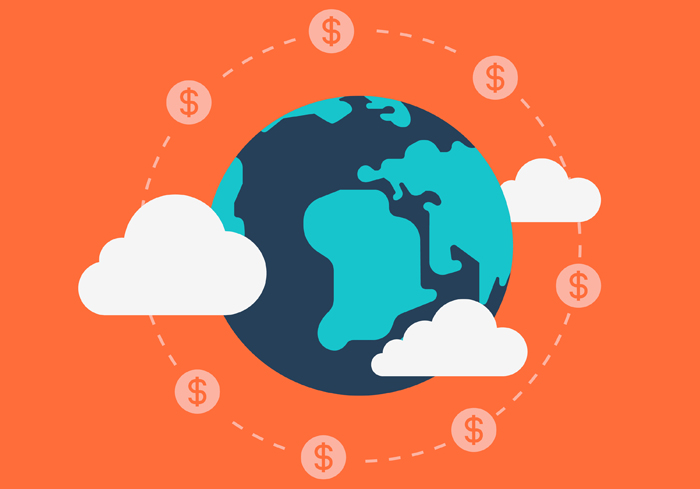
Currency Cloud is greasing the engines of cross-border B2B payments. Last week, the company unveiled an update to its API that brings faster transaction speeds with greater payment volume capacity, an upgrade that takes a step toward the industry’s increasing demand for near-instant payments.
PYMNTS spoke with Currency Cloud CMO and Head of Product Todd Latham to talk about the new solution and how the on-demand economy is emerging as a key driver behind the international B2B payments demand.
Can you provide us with some more in-depth information about how you’re making B2B payments faster with the Payment Engine Two upgrade?
TL: Payment Engine Two is an upgrade of the API that sits at the heart of Currency Cloud’s ability to integrate with our customers’ businesses. With this upgrade, we are enabling customers to break up the components of the international payment, giving them the ability to fund their account when they want, convert currencies when they want and make payments when they want. All of this can be completely automated to fit the workflow of the client.
Currency Cloud said the upgrade is a response to changing market demands. What types of businesses are demanding faster payments solutions that can handle larger payment volumes?
TL: We have over 150 clients who directly use our Payment Engine. In turn, our Payment Engine serves over 500,000 end users, i.e., business or consumer customers of our clients. Our clients include banks, payment service providers and large eCommerce businesses. In an increasingly “borderless” global marketplace, the ability to make international payments quickly, transparently and securely is becoming more and more relevant across all sectors and business sizes.
We have been talking about globalization for decades now, but in a digital world this trend is accelerating significantly. A number of key trends are coming together to drive a significant change in the payment landscape.
Firstly, international trade is increasingly open to small businesses who do not have sophisticated treasury departments. At the same time, the nature of demand is changing. Big Data combined with machine-to-machine transactions have enabled companies to develop sophisticated just-in-time systems that require a fully automated in-built payment.
[bctt tweet=””International trade is increasingly open to SMEs without sophisticated treasury departments.””]
We are also seeing a proliferation of new financing and payment models which are being driven by the FinTech revolution. A one-size-fits-all approach is not appropriate for companies in this new world. Companies do not want to architect their systems and processes to fit their payment provider, and our APIs are built in such a way that companies can flex our product to their business.
Currency Cloud also mentioned the rise of the on-demand economy as a key factor for the upgrades. Can you elaborate on that? How are the payment needs of businesses that provide on-demand services unique and especially challenging?
TL: As the world has become increasingly interconnected and eCommerce erodes international borders, cross-border business transactions have grown massively. Increased automation means that the size of each individual payment is going down, while volumes go up.
In parallel with this trend, on-demand businesses, such as Uber, Venmo and Airbnb, are contributing to the change in the way that consumers expect to make payments. In the quest for an ever more convenient user experience, we are increasingly seeing payment transactions “hidden” — embedded in behind-the-scenes technologies and systems.
At the same time, these companies are moving across borders at an unprecedented rate. The ability to pull funds from customers in different countries and remit the payment to the supplier in their home currency is key. With our real-time FX technology and wholesale pricing, we can enable these payments seamlessly and without the ambiguity you would see from a traditional transaction. We can display the price and rate dynamically so everyone knows exactly what they are getting paid and then disburse funds across our local ACH payment network, avoiding unpleasant landing fees.
Can you tell us a bit about the Cash Manager feature? How will this help businesses use treasury as a strategic function in their business? How is it easing friction in the treasury department?
TL: Cash Manager allows companies to break up the components of the international payment, giving them the ability to fund their account when they want, convert currencies when they want and make payments when they want. All of this can be completely automated to fit the workflows of the client.
This increased control helps to optimize internal processes, while maintaining complete oversight of individual transactions. It will also allow businesses to save time by making payments directly from a held balance, rather than waiting for funds to convert — a feature which will be particularly relevant for multi-currency eWallet providers and large businesses who wish to take an active role in treasury management.
What do these upgrades mean for businesses that need to pay international suppliers?
TL: These upgrades will give our clients unprecedented flexibility in how they manage their payments. They can pick and choose the features that matter to them. To give a use case, some clients need to make international payments without converting currencies — for example, paying invoices in China in U.S. dollars. These companies have no need for our currency conversion capabilities, and with Payment Engine Two, they can completely avoid them.
Correction: A promo for this article incorrectly stated Todd Latham’s title as CEO of Currency Cloud. Latham is CMO and Head of Product.